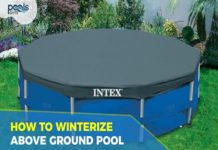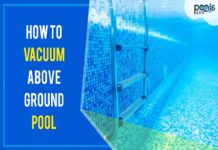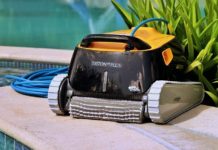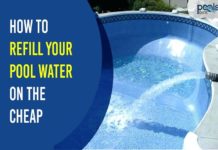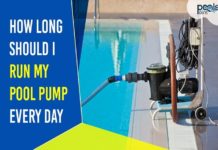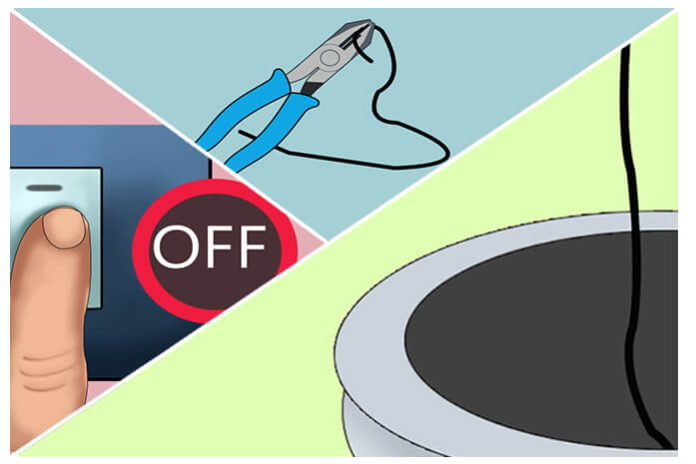Hot summer days become bearable when you have a pool to dip in your backyard. But, do not forget the maintenance part after you have enjoyed enough in your pool.
It does not matter if you have an aboveground pool or an in-ground one, you will have to make sure that it stays clean for your next entertainment session.
That is why people buy swimming pool pumps. But, you should know that this pool cleaning accessory, itself requires maintenance from time to time, especially its impeller.
Thus, you can follow this guide about how to clean a pool pump impeller and understand its importance for your pool’s hygiene.
Table of Contents
Identifying the issue with the impeller
Before moving with the cleaning guide, you should first understand the various aspects of identifying the problems with the pump.
Is the pressure in filter low or is the sound of the motor pump restricted? Was the load like this from the starting or did it lower gradually? If you think the answer is “yes” to all such queries, then your pool pump impeller may be clogged with pollutants.
It can happen if your pool area is located near trees, such as palm. The delicate leaves of such trees tend to jam the impeller often.
Location of the Impeller
The impeller is located beside the pump motor basket that is known as impeller housing. It is the responsibility of this basket to keep pollutants and debris away from the impeller housing, which could otherwise clog the impeller.
Nevertheless, the pump motor basket does not offer 100% protection from debris. Very small-sized particles can still jam the impeller by entering through the pump basket.
Thus, one should understand that an element is capable of clogging an impeller if it is of the appropriate size. For example, sand can enter through the basket and restrict the movement of the impeller.
Some other elements that can pass through are pool plaster particles, small pebbles, grass clippings, small seeds, tree flower stamens, pine needles, etc.
You should also understand that impellers at present are called “closed vane” impellers. These are named as such due to the presence of a covering in the front, which helps in creating a vacuum to draw the water inside and outside of the motor pump.
These impellers have a higher suction power that is ideal for most fluids. On the other hand, there are also open-vane ones, commonly known as vortex impeller, which does not have a closed system.
These may not have a higher suction power, but they do have an advantage of not clogging. These are mostly found in large pumps for trash and brass-based pool pumps.
For protecting the impeller, the unit is attached to an impeller plate, or diffuser is so that it creates a pressure of suction. You might also have a wear ring that is positioned over an impeller of the motor pump.
Correction and Prevention of Jammed Pump Impellers
You need to understand if your motor pump impeller is jammed or not. To learn that, check for the following:
- The pump generates low, but loud grinding sounds due to cavitation.
- The pump pressure is almost half of what it used to be.
- The water does not fill up in the basket of the pump, which can be visible through its transparent lid.
- The water in the pool pump is swirling or moving slowly.
- The presence of water is lower or almost nil than usual.
If the above signs are not visible, then you may also face the following symptoms:
- A dirty pool filter with closed valves from the return position.
- Loose drain plugs of the pump with a loose lid as well.
- Collapsed or jammed skimmer pipes.
- Valves that are closed on the side of the suction (skimmers, main drain).
- Possible air leak on the pipe that is attached to the pump.
If any of these issues are present, then it is time to learn the method of cleaning the impeller of the pump.
Steps To Clean The Impeller of the Pool Pump
Step 1: Inspect before cleaning
Instead of moving on with the disassembling part instantly, you should first check the pump basket and filter for clogged particles. If you find that it is plugged, then you should move to the next step.
Step 2: Inspect the hoses for cracks
This step is meant for those who got a floor vacuum with their pump unit. The task here is to check whether the hoses have cracks upon them or not.
Cracked hoses can lead to leakage, thus lowering the pressure. So, first, you need to check the hose. Bend the host from side to side so that you can hear for air sound from the hose.
Step 3: Move to the impeller
If any of the above components are not at fault, then it is possible that you have a jammed impeller. You will need a set of pliers and a shirt hanger for the upcoming steps.
Step 4: Turn off the power supply
Go to your houses circuit breaker and switch off the power supply active for the motor pump. Remember, do not just turn off the timer on the pump.
You must switch off the total power supply to the motor, as you do not want the motor to start while you are cleaning it.
Step 5: Removing the pump basket and the lid
Unscrew the lid of the pump basket and remove the basket attached to the impeller.
Step 6: Making a hook
Use the pliers to bend the hanger wire into a small-sized hook of about half inch at one end. Give it another bend at about 6 inches gap so that you can control it while inserting it in the impeller unit.
Step 7: Looking for debris
You will need to insert the hook inside the impeller’s opening to try and scrub around for clogged debris inside.
Keep pulling out particles while scraping around and try cleaning the impeller. You may have to spend some time while doing this step to clean the impeller.
Step 8: Priming the pump
Once the cleaning part is complete, you need to put the basket of the pump back to its position. Then, with the help of a hose fill the impeller housing with water to prime it properly. Then, reassemble the pump lid.
Step 9: Turn on the power
Switch on the power supply through your houses circuit board and start your pump once again.
If the pressure is still not up to the mark, then you may need the help of a professional to look at your pool pump unit. However, if the pump is back to normal, then congratulate yourself for this achievement.
Remember that you can prevent your pump impeller from clogging if you keep a check on the following points.
- You can use a knee sock made of nylon to line the interiors of the pool pump basket for keeping the smaller debris away from the impeller as well.
- Make sure to trim the leaves of bushes and trees that are near the vicinity of the pool pump to avoid clogging of your unit.
- You can also prefer skimmer socks during the time your impeller jams.
- Pump basket should always be attached to the pump before running it. You should keep a check on the pump motor basket to see that it has been fitted correctly, as some baskets require a rotating motion to lock it in position.
Final Thoughts
Hope these tips help you understand the need of checking your pool pump impeller and its components. After all, prevention is vital to ensure the longevity of a machine.
Whenever you need help with cleaning an impeller, go through this guide about how to clean a pool pump impeller and provide a cleaner pool pump for your swimming pool.


